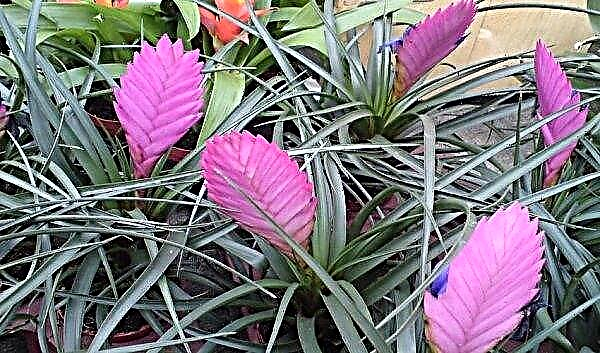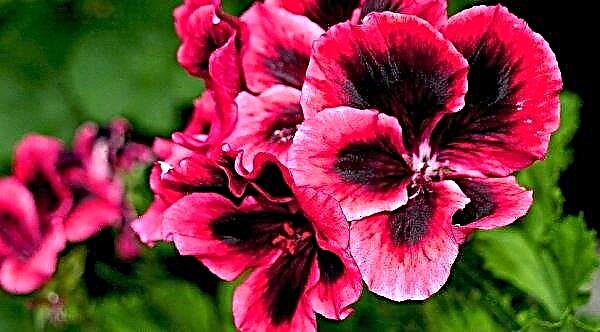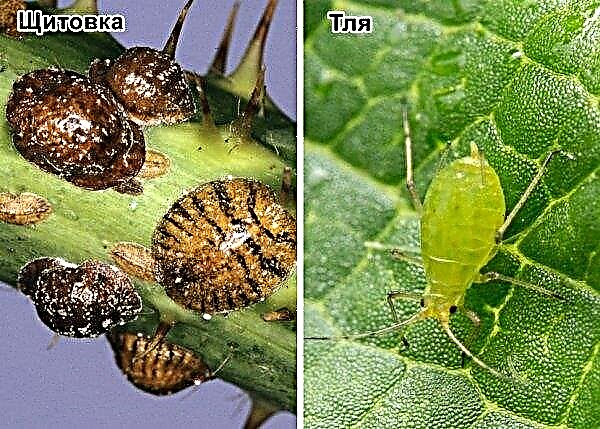The tall and beautiful iris for the richness of color coloring owes its name to Irida, the Greek goddess of the rainbow. Despite this flattering origin, this June flower is simple and reliable to grow on flowerbeds and discounts. Having become acquainted with the material of the article, you can plant and decorate your garden with these wonderful decorative flowers.
Irises landing time
Most irises bloom in early summer. Some varietal hybrids are remontant, blooming later repeatedly. You need to plant irises in open ground in the middle of summer or closer to autumn (July – October), depending on the climatic features of the region. Night temperatures should be + 5 ... + 10 ° С or higher, which gives plants enough time for good development and rooting before the coming winter. The planting period is chosen so that the plants are at rest after flowering.
If you buy bare rhizomes or irises in a container at the beginning of the year, then you need to transplant them into the ground as soon as possible, without waiting for a convenient time. These are not plants that can be stored for long without land.Did you know? Not only the iris flower, but also the chemical element Iridium, whose compounds also have many color options, and the asteroid Irida, discovered in 1847, are named after the rainbow goddess.
Site selection and preparation
To ensure abundant flowering, you need to plant iris rhizomes in a sunny place (you need at least 6 hours a day) with well-drained, fertile and nutritious soil. Flowering will be weak in shaded areas, and poor drainage can lead to bacterial root rot. Planting irises on a small slope or in raised beds ensures that the flower will not get wet when water stagnates.
Flowers can endure sun exposure for half a day, but this position is not ideal for iris. Flowers should not be in the shade of other plants, so it’s best to plant them in separate areas designated specifically for irises. They like an almost neutral pH or slightly acidic soil and a moderate amount of nitrogen, phosphorus and potassium. Too much nitrogen will contribute to the lush growth of greenery to the detriment of flowering.
Before planting, remove all weeds from the intended garden area. Then loosen the soil to a depth of 30–40 cm for easy installation of rhizomes and ensure proper drainage and cover with a layer of compost of 5–10 cm.
Preparing planting material
When choosing planting material, consider the color scheme that you want to create in your garden, and choose from a wide range of colors available in pink, white, blue, purple and purple shades. You can order irises in online stores or purchase in nurseries.
Video: how to plant irises
But you can divide and plant the flowers already growing on the site. This is a good way to rejuvenate plantings, propagate flowers and protect against pests, which often damage old and crowded gardens. You can also exchange planting material with your neighbors and expand your flower assortment. Good planting material should be thick in the finger, have healthy roots and 1-2 leaf fans. Large old rhizomes that have no rudiments of leaf blades should be discarded.
Any planting material (both purchased and independently prepared) must be inspected for harmful lesions, remove problem areas, disinfected in a potassium permanganate solution, and dried in the sun. Slices need to be processed with powdered activated carbon or cinnamon.Important! Different varieties planted too close to each other will become mixed and difficult to identify.
 The roots should be shortened to 10 cm, the leaves to 10-15 cm.
The roots should be shortened to 10 cm, the leaves to 10-15 cm.
Phased landing
When landing, follow the instructions given:
- Dig up a fused lump, divide it into separate parts and check them for diseases or insect damage. Damaged stems, flexible, soft and hollow rhizomes should be discarded.
- Tear off or cut off the old part of the rhizome, as it will no longer bloom. The rather long roots of the iris will help the newly planted plants to gain a foothold in a new place.
- Prepare a mixture of soil and compost (mix evenly).
- Dig a shallow pit or trench (up to 10 cm). In the middle, make a mound from the soil to put a rhizome on it. Distribute the roots on a raised platform and cover with a prepared mixture of soil and compost.
- Make sure the roots are covered in soil, but leave the top of the rhizome open above the ground to avoid rotting.
- In the next season, the plant will give shoots that will grow from the head of the rhizome and grow a fan, so when transplanting, turn it in the right direction for the correct arrangement of flowers in the flowerbed.
- Leave free space between the plants for further growth, since iris requires good air circulation. Place planting material from each other at a distance of 30-60 cm for tall varieties, closer (20 cm) for low and dwarf varieties.
- To facilitate planting and stimulate the formation of new roots, you can trim the top of the leaves to about 15 cm in height.
- Water the planting site well so that the soil around the roots settles and compacts.
- Continue to water once a week until growth appears.
- After rooting, irises are resistant to drought and do not need additional irrigation except during dry periods.
- Often, plants take some time to overcome the stress of transplanting and adapt to new areas.

How to land in a circle
If you want to arrange the planting of irises in a circle, then determine the location on the site and draw a circle for the proper placement of plants. Make holes with a diameter of 25 cm and a depth of 10 cm with an interval of 40-50 cm for high varieties and 20-30 cm for dwarf ones. 
Rhizomes need to be planted with a fan outward, and with the end (the place of attachment to the old part) - to the center of the circle.
With this arrangement, irises will not grow towards each other, and rhizomes will not be intertwined. Over time, the entire part of the circle will be filled with flowers, and a picturesque round flowerbed will form.
Important! Irises will not bloom if planted too deep. The top of the rhizome should be at the surface of the soil.
Proper care after planting
After rooting, iris care is simple and minimal for 3-5 years, when the time comes for the next rejuvenation of plantings and separation of rhizomes to ensure long flowering.
Fertilize in early spring with a universal fertilizer for flowers with a low nitrogen content in the grooves around the plants or with compost. Avoid applying nitrogen fertilizers to the surface or mulching with organic substances that can cause rhizome rot. Repair irises give better results if they are fed again after the end of the first flowering wave.
Irises are resistant to drought, but even such plants need moisture and periodic moderate watering, which is necessary to achieve the growing season and good flowering. Flower beds should not dry out, so in dry periods it is necessary to water the flowers at least once a week. In summer, in a drought, without good watering, growth can stop, and the plants become inactive. Do not mulch the soil around the rhizome (keep them open), as the mulch retains moisture, and too much water causes rot.
Higher irises need a garter so that flower stalks do not break. Flowering occurs sequentially on buds located along the stems. After flowering is completed, cut the peduncles at the base. Remove the seed capsules that form after flowering. The formation of a seed takes away the energy needed by rhizomes, roots and leaves.
But do not cut the leaves of the iris after they have finished blooming. Leaves continue plant photosynthesis for growth and development of flowers in the next season. This is one of the important parts of caring for irises. Cut the foliage only in late autumn after frosts, to reduce the likelihood of wintering in plant debris from pests and disease foci.Important! To separate young rhizomes from the mother, you may need a sharp knife, which should be wiped with alcohol after each cut so as not to spread the disease to new flowers.

To protect against winter frosts, care must be taken to shelter the flower garden. Sprinkle the rhizomes with 3-5 cm of sand, and cover with spruce branches, which are applied after the onset of cooling and are removed the next spring. In early spring, remove winter mulch and any old foliage to provide fresh new growth and prevent clogging of the iris.
Irises can remain in the same place for 3-4 years and form overgrown rhizome families. Every few years, it is useful to dig and divide irises, thinning them and replenishing the soil with organic substances as before laying new beds. Each rhizome blooms only once, then in subsequent years, displacements bloom, which are formed annually on each side of the main rhizome.Did you know? From the fried iris seeds which were very expensive in ancient times, a coffee-like drink was made.
Proper care will ensure long and plentiful flowering. But sometimes beginning flower growers wonder why irises do not bloom.
There may be several reasons:
- recessed landing;
- tightness and densely grown lump;
- lack of sunlight;
- stress after transplantation;
- varietal features;
- bad wintering and frost damage.

Disease and Pest Prevention
Irises are resistant to many diseases and insect pests. Most gardeners can easily avoid minor troubles without resorting to insecticides or other treatments. Prevention is the best way to prevent diseases and harmful lesions. Keep the flower garden clean, remove plant debris and fallen leaves, remove weeds, observe the optimal spread rate and type of fertilizer, carefully examine the flowers in order to detect diseases and pests in a timely manner.
Did you know? For use in perfumery aromatic compounds of iris rhizomes, they are collected, dried and aged for 5 years in order to degrade and oxidize the constituent oils. Their smell is like the scent of violets.
Irises are resistant to rust and drought, but susceptible to the iris fly, which hibernates in the form of eggs in fallen leaves. In case of damage by whiteflies, weevils, thrips, aphids, nematodes and iris flies, it is worthwhile to apply the appropriate insecticides and treat the flower garden in accordance with the instructions attached to the drug.
Snails and slugs can climb leaves and disfigure flowering, especially in conditions of high humidity and rainfall. The arrangement of lures (for example, plates with beer) or the collection of insects by hand will help. But they do not bring much harm, except for the unaesthetic appearance of flower beds with irises. When signs of decay appear in the rhizome, it is necessary to dig it out and remove the affected parts. Sunburns can occur in the summer, when the sun scorches the rhizomes, as a result of which they become soft and deteriorate. Adding soil or mulch will solve this problem.
Breeding a beautiful flower garden in the garden depends on the skill and knowledge of the grower. Having familiarized yourself with the material on planting irises, you can easily and simply grow these wonderful flowers that amaze the imagination with the richness of shapes and a variety of colors and shades, and all the details are harmonious and verified by nature itself.












